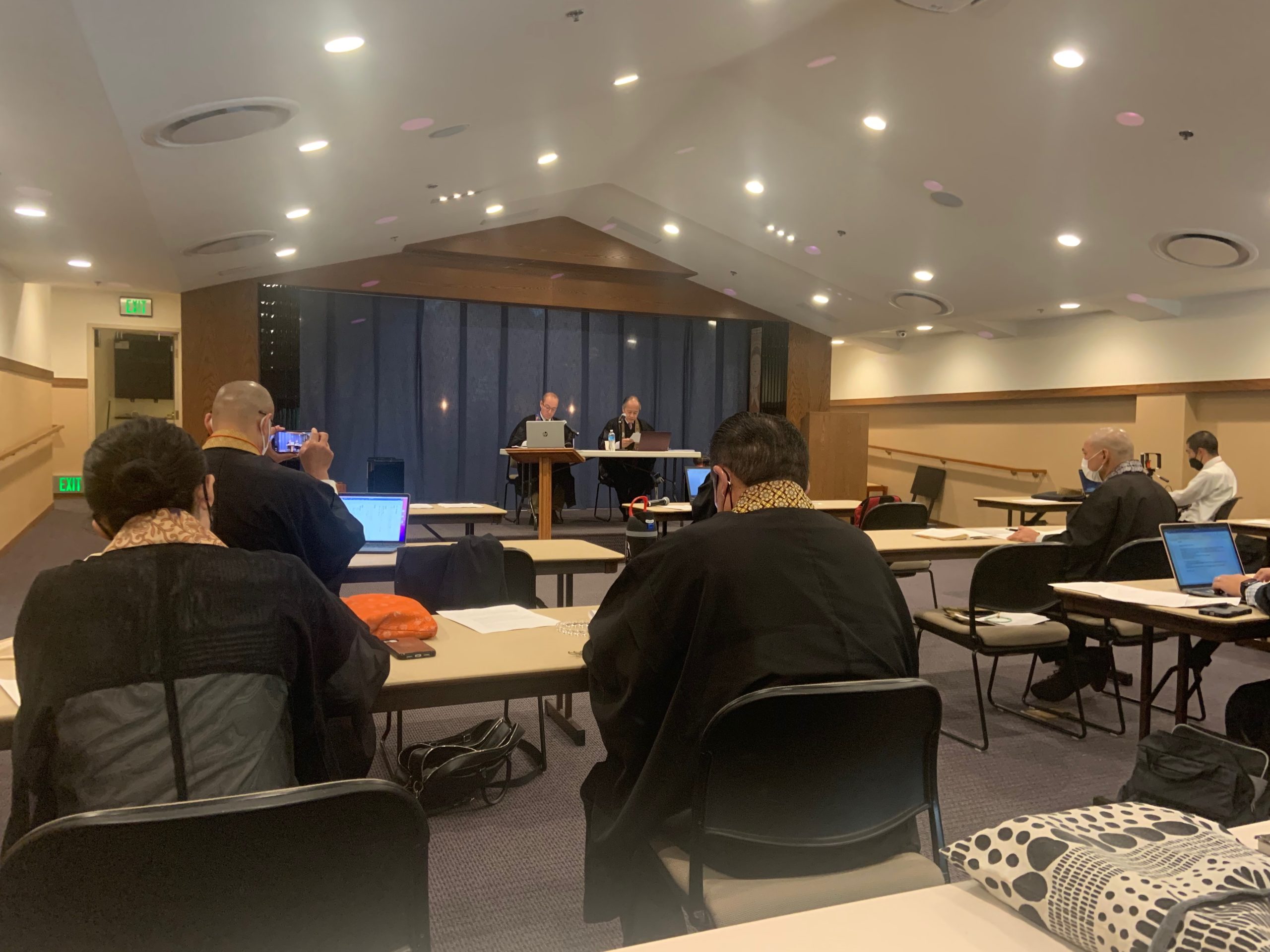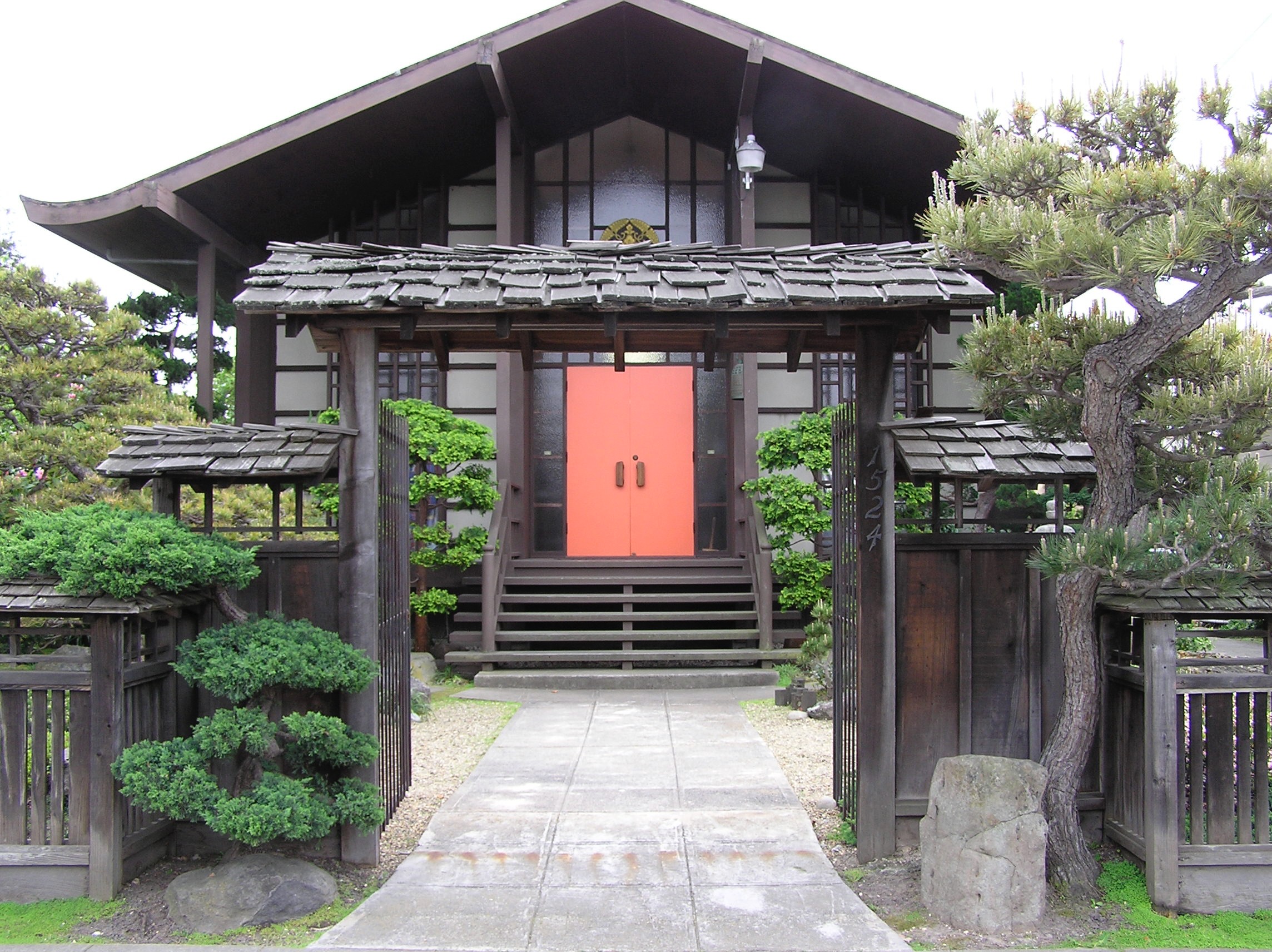
By Rev. Ken Yamada
An interesting discussion occurred recently about what’s happening at Jodo Shinshu Buddhist temples post-Covid. In-person services are returning, yet life definitely isn’t back to normal.
Ministers from Higashi Honganji and Nishi Honganji met last week for their annual joint WEHOPE seminar (West East Honganji Propagation Exchange) at the Jodo Shinshu Center in Berkeley, California. It was their first in-person meeting since the Covid outbreak began. The most dire topic focused on how temples are trying to return to pre-pandemic routine with limited success.

The pandemic forced the closure of temples in 2020, but sparked the use of Internet technology, enabling online services, lectures, seminars and discussions. Ministers from states such as Wisconsin, Illinois, Oregon, California and Hawaii spoke about how online they were attracting new people, many of whom live faraway and wouldn’t normally attend.
Many of those online events remain available as videos on YouTube and on temple websites, serving as resources and ways to attract still more viewers. Many temple members embraced the online format, allowing them to “attend” Sunday services and stay connected to the sangha and temple. Many temples continue to use a “hybrid” format, conducting in-person services while broadcasting online, then making videos available for viewing afterwards.
The problem is that online technology perhaps has become too successful. Many members still prefer to stay home and log-on, rather than drive to a temple and participate in-person.
Granted, it’s far easier to sit before a computer in the comfort of home, perhaps with coffee cup in hand. I admit, I’ve also been guilty as charged.
Consequently, although temples are open, attendance is down compared to pre-pandemic times. Many senior members—usually a core group of participants—also are staying away, afraid of mixing with others and catching Covid.

Add in shrinking membership numbers from the past few decades and the picture suddenly doesn’t look so rosy.
The implications go beyond attendance counts. As someone pointed out, it’s now possible to hear dharma talks at almost any given temple with the click of a mouse. There are now people who regularly view multiple services and dharma talks. The number of these “service surfers” seems to be growing. Bravo to their interest in hearing the dharma.
However for temples, the harsh reality of freely accessing services and hearing dharma talks means those people probably aren’t going to temples, participating in activities, providing support and upkeep, and most dire of all, making monetary donations.
Before you think any cynical thoughts about this last point, please realize: The hard truth that ministers and temple board members face is keeping temples alive, and that takes money.
How to get people back into temples? More than one minister said half-jokingly that serving food and eating together may be the key.
Temples exists for their members and for people in need. They are important places to hear the dharma, to celebrate and mourn, to meet friends, and to reflect on life. If people replace this physical location with a virtual place online, what will happen to our temples?
I too have mixed feelings about Internet technology. I teach a Buddhism class at Berkeley Adult School. The pandemic forced cancellation of in-person classes, but soon we were encouraged to teach online using Zoom. The number of students enrolling in my class increased, as well as the distance where they lived. Before, students lived in Berkeley and surrounding areas. Now they might live in different states. Last quarter, one student enrolled, even though he lived in Korea, and watched video recordings of the class.
I learned PowerPoint for the first time, creating many slides and using many pictures. Sometimes I showed video or played a recording via Zoom. The class definitely became more interesting and entertaining.
However, a key component took a hit—discussion. Students hesitated asking questions or making comments on Zoom. At first, I called on people to voice their views, but it made some people feel uncomfortable. Based on my own experience as a Zoom participant in other classes, I had felt the same. It’s nice just sitting and watching without having to think much, like I do for Netflix.
When talking about dharma, discussion is super-important. It’s crucial to clarify our thoughts by voicing opinions, asking questions, and getting feedback. How better to relate the teachings to our lives?
At WEHOPE, a minister said it’s crucial to hear Jodo Shinshu teachings in person. Nothing can replace that experience. I agree. A true sense of the teachings is transmitted from person-to-person. It can’t be replaced by reading a book, meditating by yourself, watching a video, or going online. All the people I know—who really treasure Shinran’s teachings—feel that temples are a special place for hearing the dharma.
Please make an effort to attend service, to participate in activities, and to support your local temple. The temple needs you, and you need the temple.
-Rev. Yamada is editor at Higashi Honganji’s Shinshu Center of America

